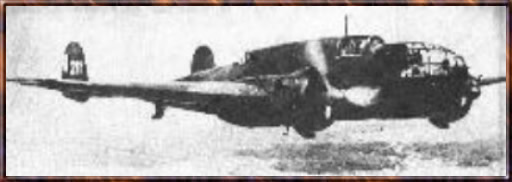
To make matters worse, just 36 P.37's were actually battle-ready, on the 1st of September 1939. Engaged in hopeless attacks on German armored columns ( hardly their typical task ), the P.37's took heavy losses and the number of operational airplanes dwindled fast.
On the 17th of September 1939, an unclear number of P.37's ( 22 according to Romanian archives - 27 according to the Polish ones ) fled to Romania to escape the advancing German forces. As it happened with most Polish planes, the P.37's were taken over by the ARR as part of an agreement reached between the Romanian state and the Polish government in exile. It seems that the ARR had ordered some 30 P.37D's in May 1938, after having seen the aircraft at the Belgrade air show. The planes were supposed to be delivered by the spring of 1940, but when war broke out all contracts were cancelled, although they were paid for. Eventually, 19 P.37 Los's were taken into service and two bomber squadrons ( the 76th and the 77th ) were equipped with these bombers. They served well during the Bassarabian campaign, during which the P.37's shot down four Soviet fighters and claimed to have destroyed other 45 various planes on the ground. After the end of the campaign they were retracted from frontline service mainly because spare parts were almost non-existant which turned maintenance into real nightmare and few planes were serviceable any more. In 1944, a squadron ( the 76th one ) was hastily re-equipped with P.37B's and sent to the east front as part of an all-out effort to stop the Soviets, but the plane's second combat period was to be short, since after the 23rd of August 1944, Romania left the Axis, and the P.37's were taken out of service.